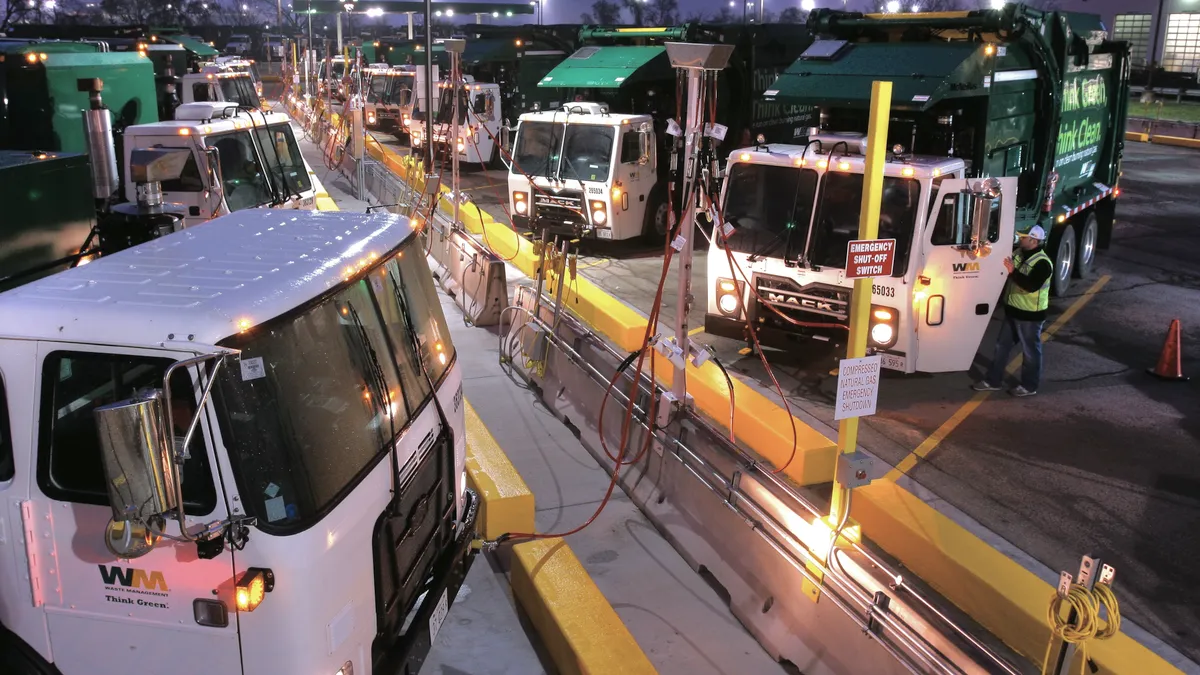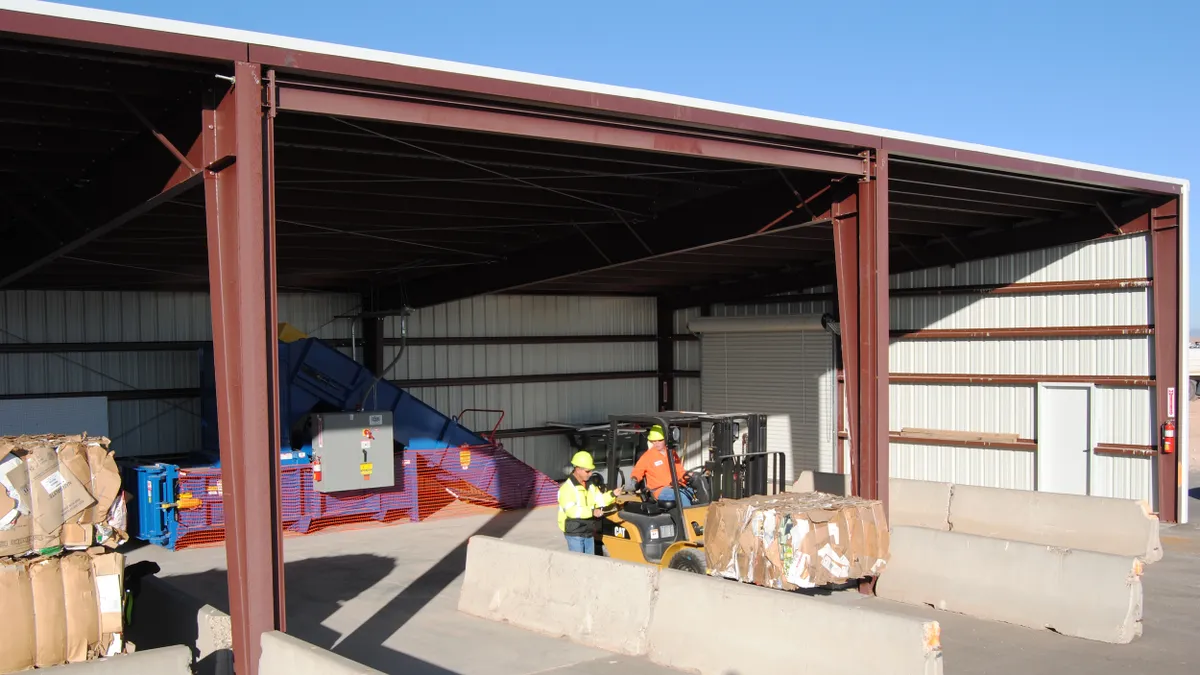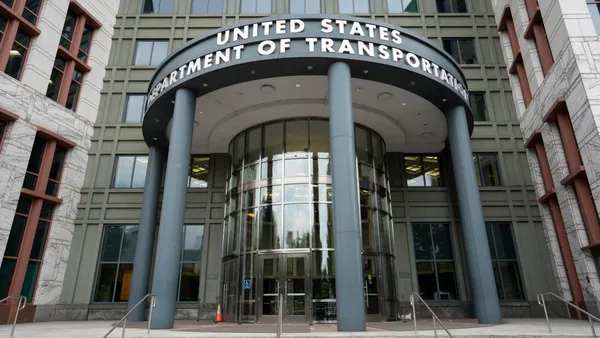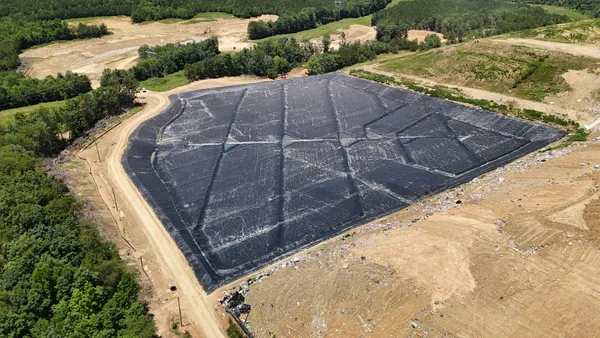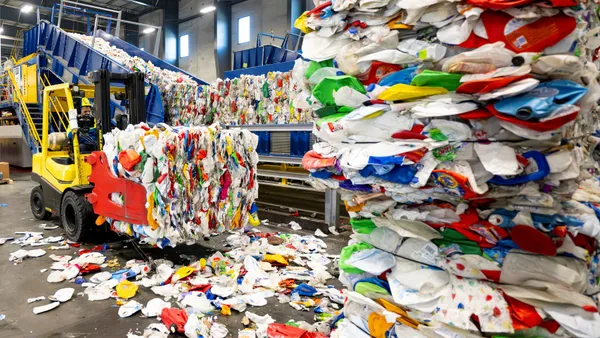Dive Brief:
- Waste Management reported third quarter revenues of $3.72 billion, up from $3.55 billion for the same period in 2016, and saw positive trends across the board on almost every category. During the earnings call, CEO Jim Fish called it "arguably the best quarter Waste Management has had in its history."
- Third quarter MRF tons were down 9.1%, and tons sold in September were at their lowest level in seven years due to hurricane disruptions, but Waste Management still reported $60 million in recycling revenues. That number may be lower for the fourth quarter, but Fish said a multi-year focus on alternative markets and higher quality would help. COO Jim Trevathan said that China has "granted a few licenses and we're preparing shipments here in Q4 to their mills."
- During the call, Waste Management also announced the hiring of its first chief digital officer. Nikolaj Sjoqvist, formerly a vice president within the company, is expected to work on projects ranging from route optimization to high-level volume analysis. According to Trevathan, this focus on data, especially for large national customers, is a way to "truly attempt to differentiate ourselves."
Dive Insight:
Waste Management continued a string of successful quarterly reports and saw its stock price rally to surpass levels from before a China-related drop earlier this month. With a second consecutive quarter of record operating EBITDA, 1.1% increase in total volume and 7.7% in overall landfill volume, the company's executives were widely positive. The recent hurricanes in Texas and Florida, though costly in the short-term, may also lead to additional landfill tonnage from either storm or construction debris, once rebuilding picks up.
Similar to what Fish told Waste Dive in late September, the company is focusing specifically on quality control rather than widespread MRF upgrades at this time to meet more stringent recycling contamination standards. Chinese inspectors have reportedly been visiting the company's MRFs for multiple years, and that relationship continues, with the inspectors still granting shipments for bales that meet their specifications. This news of material beginning to move more freely tracks with what others in the industry have been saying this week and a widespread belief that Chinese paper mills still want U.S. OCC to meet demands from e-commerce and other sectors. Trevathan also said that Waste Management's long-term market planning had begun to pay off and allowed the company to still move what he called "the best material in the marketplace."
"...We have developed for four years or five years now, other markets around Southeast Asia primarily, and in India, to receive materials. Our large brokerage business requires us to find alternative markets, and we've done that, and that's helping us as well as we look for ways to get around the short term blip we think in what China's doing," he said.
Looking ahead, Waste Management executives also talked about offering competitive regional wages to reduce turnover amid the national truck driver shortage, ongoing capital expenditures to support growth and plans to complete around $200 million in acquisitions for the year. While that could include some recycling business, Fish said most of the spending would be for "straight down the middle of the fairway, solid waste tuck-ins." Technology continues to be a big focus for the company, and this will be an important area to watch since Fish has talked it up so much during 2017. He described Sjoqvist as "the right leader to take us on this new and important journey," with more results to come in the new year.
Fourth quarter results will be more telling when it comes to the financial effects of China's scrap import policies, but so far it appears that Waste Management may be well-positioned to weather these changes like fellow competitor Waste Connections recently reported. A fuller picture of the industry's exposure will become available after the remaining companies announce their third quarter earnings next week.



